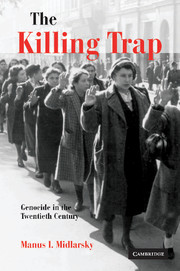Preface
Published online by Cambridge University Press: 22 September 2009
Summary
I write this book after a 46-year gestation period. This does not mean that my thinking about the book spanned nearly five decades. Instead, my experiences as a seventeen-year-old were formative and ultimately decisive in the decision to do the research and writing.
For many years, I avoided the issue of the Holocaust, despite an intense training in Orthodox Judaism and a household deeply affected by the news of the Holocaust. Although both sides of my family were originally from Eastern Europe, site of the most extensive massacres, we were fortunate in that none of our immediate relatives was murdered by the Nazis. To my knowledge, not even a first or second cousin of mine succumbed to this bestiality. Yet, as in most American-Jewish households of that period, feelings ran deep, especially as the full extent of the horrors had been so recently revealed. At the age of seventeen, I was afforded the opportunity to experience them vicariously.
On Yom Kippur in Israel, in 1954, I visited an uncle (through marriage), who escaped from eastern Poland with his immediate family to live with relatives in Voronezh, in the depths of Russia. Virtually all of his relatives who remained in Poland perished in the Holocaust. Now in Israel after leaving the displaced persons camp in Germany, he was living in one of the last of the Israeli transit camps (Maabarot).
- Type
- Chapter
- Information
- The Killing TrapGenocide in the Twentieth Century, pp. xiii - xviPublisher: Cambridge University PressPrint publication year: 2005



